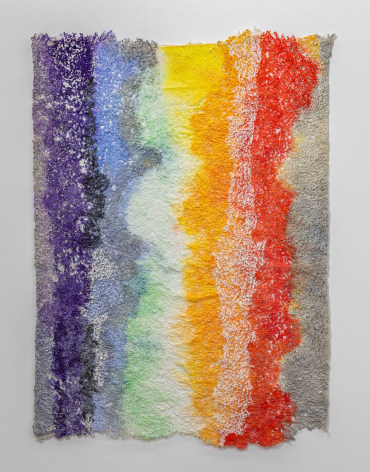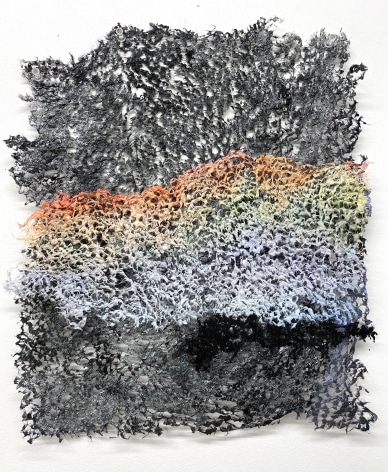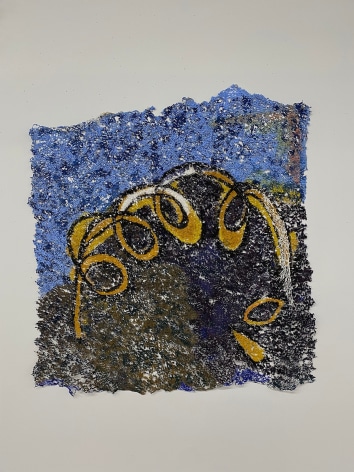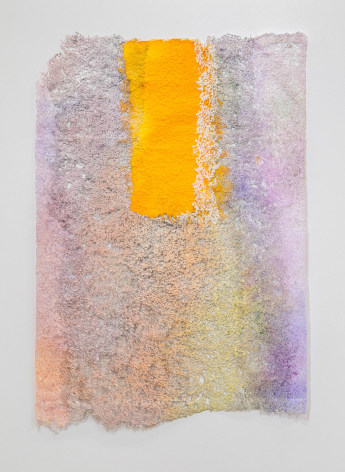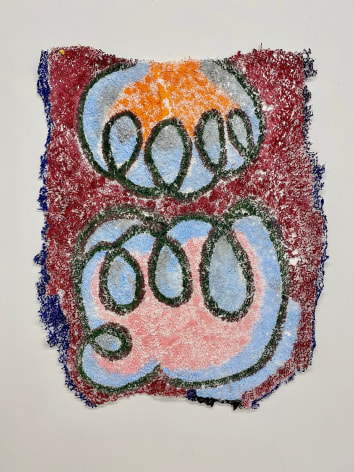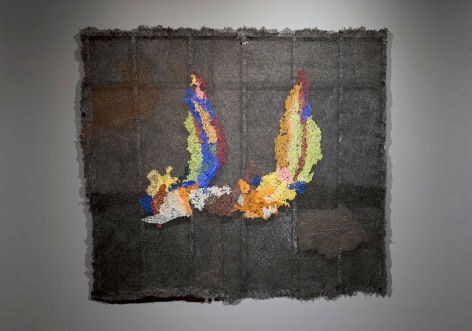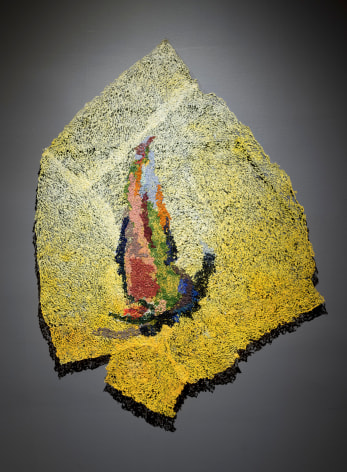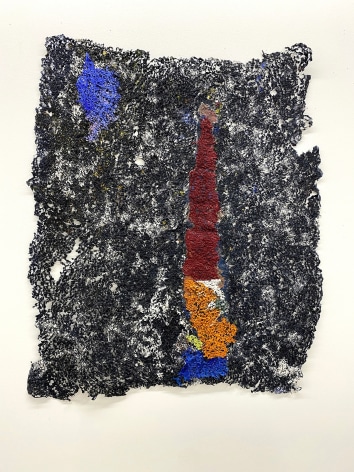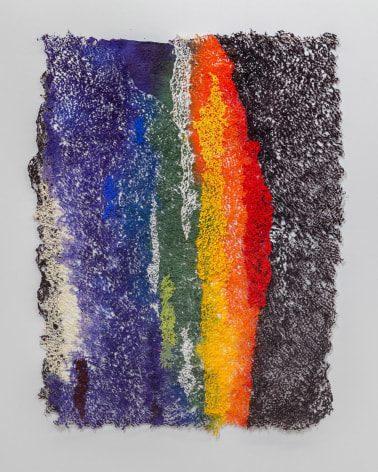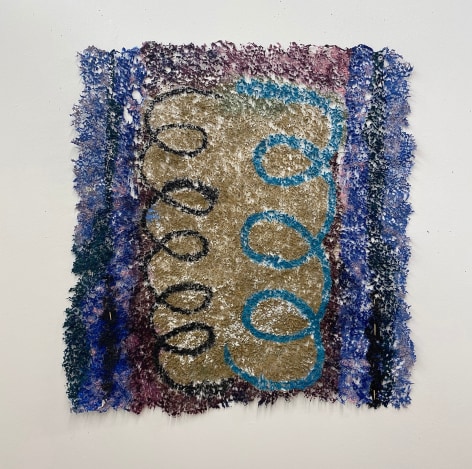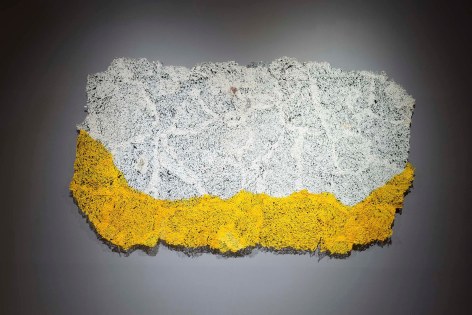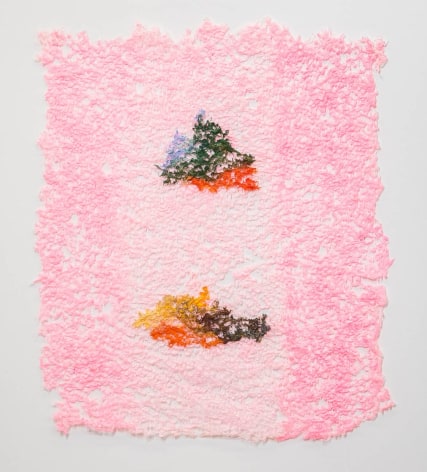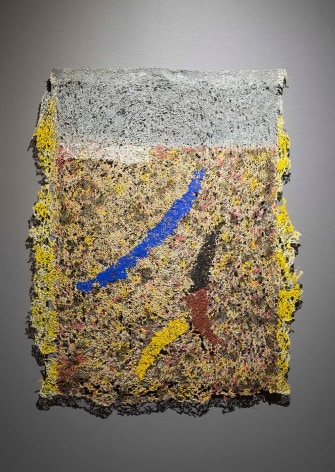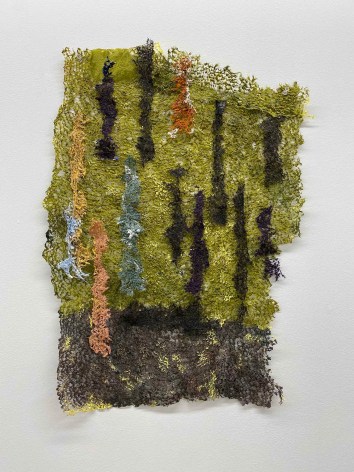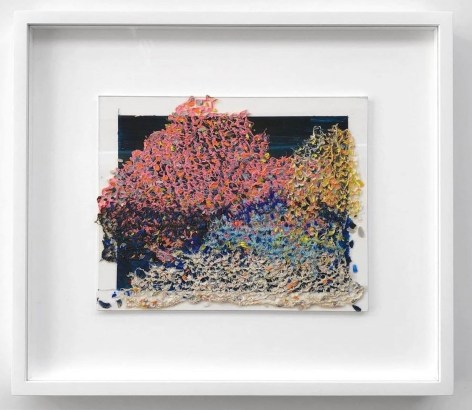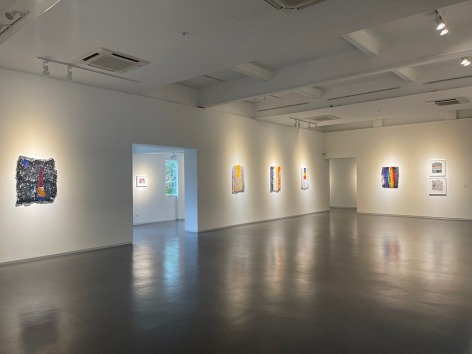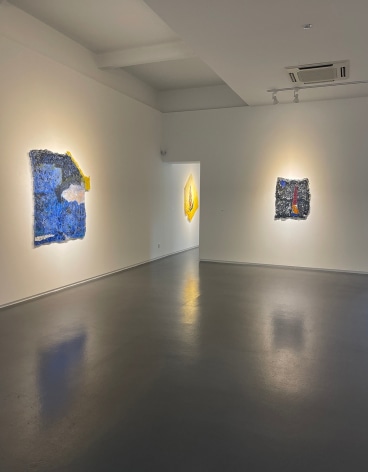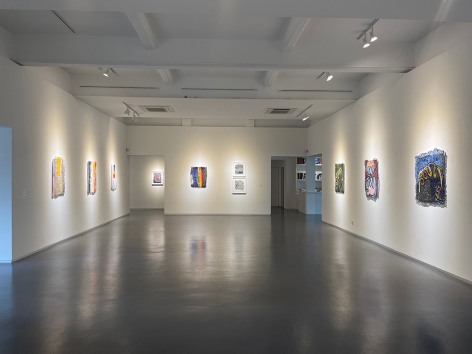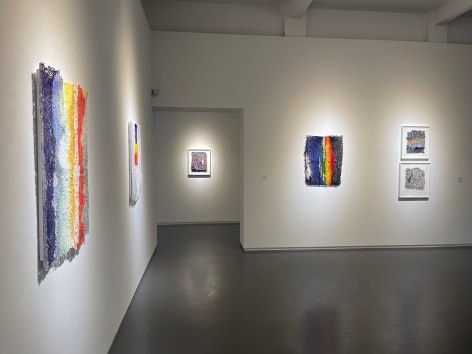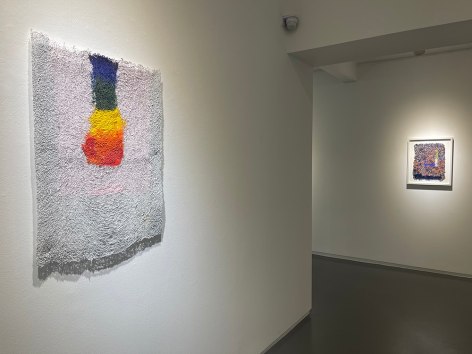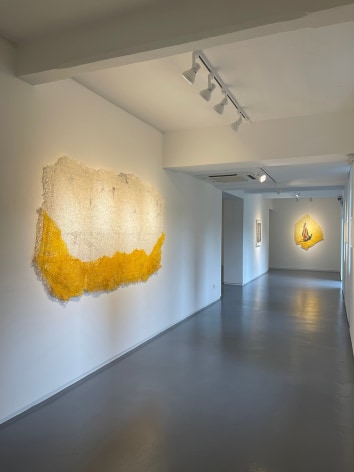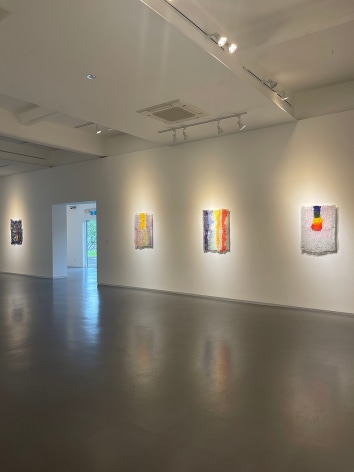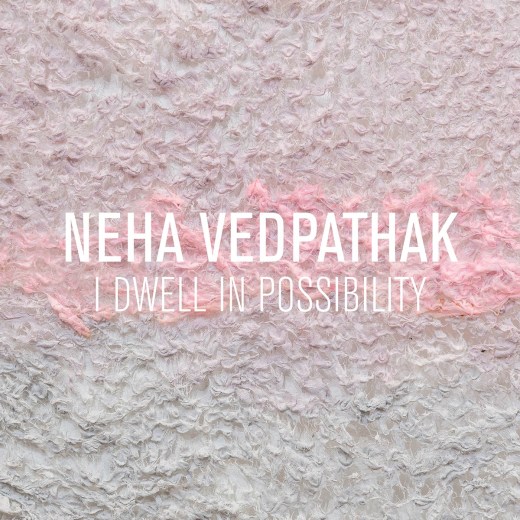Sundaram Tagore Gallery is pleased to present new, tactile, abstract paper compositions by Indian-born Detroit-based artist Neha Vedpathak. The exhibition includes a selection of richly colored paintings from recent museum shows as well as a brand-new body of work exploring liminal spaces created especially for Singapore.
Vedpathak (b. 1982), who moved to the U.S. from India in 2007, began receiving critical recognition early in her career. In 2018, the Detroit Institute of Arts commissioned her to create a large-scale paper installation for its new Asian wing. Currently, her work is on view in the museum exhibition Invisible Thread at The Baker Museum in Naples, Florida.
Part painting, part collage, Vedpathak’s sensuous, textured constructions seemingly float while casting intricate shadows against the wall. The technique she invented to conjure this illusion appears deceptively simple: Using a pushpin, she plucks handmade Japanese paper, separating the fibers until the paper is transformed into swaths of lace-like material that she sews together and stains with pigment. It is a deliberative and labor-intensive process that can take weeks, even months to complete, making time itself an integral force in each work. For the artist, plucking paper has become a ritual of transformation, a slowing-down, a meditation.
EXHIBITION HIGHLIGHTS
The show includes select paintings from Vedpathak’s 2021–2022 solo museum exhibition Time (Constant, Suspended, Collapsed) at the Flint Institute of Arts in Michigan. She created the work in 2020 at the height of the pandemic, when pregnant with her first child. During the lockdown, Vedpathak lost all sense of time while simultaneously going through a sequence of pregnancy milestones that marked time in an acutely linear fashion.
Intrigued by the duality of that experience, she began investigating concepts of time relating to space and motion. She created a small group of Loop paintings inspired by the idea of time collapsing. In these works, the fluid, circular motion of the spiral form reflects Vedpathak's transition from feeling a loss of control to eventually surrendering to the experience. For an artist who finds contentment in the highly disciplined nature of her process, working through a prolonged period of unpredictability was a transformative experience—one that inadvertently prompted her next series.
In this new body of work, Vedpathak uses the image of a rainbow to express the fleeting, often imperceptible moment when we transition from one state of mind to another. The idea was inspired by a dazzling spectrum of color that streamed through a glass-block window in her studio. Vedpathak was struck by the way light travels from one medium to another. “It’s about that moment when two ideas meet or two attitudes collapse into one,” she says. “When we shift from one space to another, whether emotionally or physically, that's when something magical can happen.”
ABOUT NEHA VEDPATHAK
Neha Vedpathak was born in Pune, India, in 1982, and moved to the United States in 2007. She began as an abstract-minimalist painter, but her career took a formative turn in 2009 when she was exploring ways to take her two-dimensional practice in a new direction. Her experiments with different media (and her desire to avoid toxic materials) led her to Japanese paper. Already in her repertoire as a painter, it became the focus of her practice.
Her works have been shown at the Flint Institute of Arts, Michigan; the National Indo-American Museum, Chicago; The Baker Museum, Naples, Florida; Arizona State University Art Museum, Tempe; Weatherspoon Museum, Greensboro, North Carolina; Detroit Institute of Arts, Michigan; and Centre d’Art Marnay Art Centre, France.
In 2021, Vedathak received the Gilda Award for painting from Kresge Arts in Detroit, which recognizes emerging artists who demonstrate exceptional potential through creative risk-taking and pushing the boundaries of their chosen art forms.

